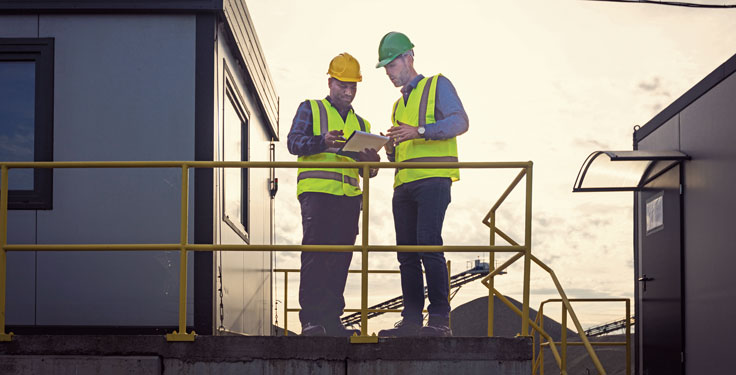New dynamics at play in crushing parts supply
The 2022 aggregate production season is off and running.
Demand for construction materials is high, and no slowdown is on the horizon in a business environment that’s about to get a positive jolt from a record-setting infrastructure bill.
Like aggregate producers, equipment manufacturers largely feel good about the ample sales opportunities in front of them in the months ahead. At the same time, though, they recognize that a number of business headwinds are swirling.
Some of the headwinds lingering from 2021 are tied to the supply chain, which will present an assortment of 2022 slowdowns not only for the producers crushing rock, but for those manufacturing equipment and parts related to crushing.
“Our customers feel they’re going to have a good year this year, but the concern is where do they go from there,” says Doug Henderson, product engineering manager of gyratory crushers at Columbia Steel.
Perspective
Columbia Steel, which provides crusher replacement parts to the aggregate industry, is among the many manufacturers who’ve experienced tremendous spikes in raw material pricing.
While pricing has shown some signs of flatlining, the increases manufacturers endure are nevertheless a lot to bear.
“With manganese inputs, I believe they have stabilized to some degree now but some of those have gone up 160 to 170 percent in recent months,” says Mike Moehnke, director of marketing and sales at Columbia Steel, who adds that he’s also seen a sizable run-up in chrome pricing. “That’s definitely having an effect on manganese pricing right now, especially our premium-grade manganese.”
Additionally, Moehnke says lead times remain stretched out. While some customers tell Moehnke they’re currently seeing lead times in the eight- to 10-month range, he says Columbia Steel’s lead times are out to about four months.
“We have kind of a double whammy going on at a minimum,” he says. “We have an increase in inquiries due to supply chain concerns [such as] shipping cost and vessel space availability. Customers buying from the competition that’s coming in from offshore are turning to us, and that has increased our order book.
“The other part of that double whammy is the personnel issue,” Moehnke adds. “It’s trying to find people who want to work. We’re struggling to find people who want to work just like others around the country. You see ‘help wanted’ signs everywhere. A lot of industries are struggling to find people who want to come into work every day.”
With manufacturers like Columbia Steel combating a variety of challenges, their best advice for customers is to plan ahead.
“We’re asking our customers now to plan ahead more than they used to,” Moehnke says. “We’re still stocking for customers. A lot of our business increase is [the result of] returning customers who maybe had gone to a cheaper product for a while, and they are coming back because they are worried about their supply.”
And with supply continuing to be tight, Moehnke says more customers are trying to squeeze more life out of items like liners.
“When there is a supply chain issue, you want your parts to last as long as possible,” he says. “So we are doing a lot of work analyzing the liners going into customers’ machines, making sure they’re getting the best fit for them. In a lot of applications, that means a custom liner for them. That’s helping customers extend their liner life, which then reduces their concerns about supply chain. It could be changing out three times a year instead of four.”
Featured photo: P&Q Staff











